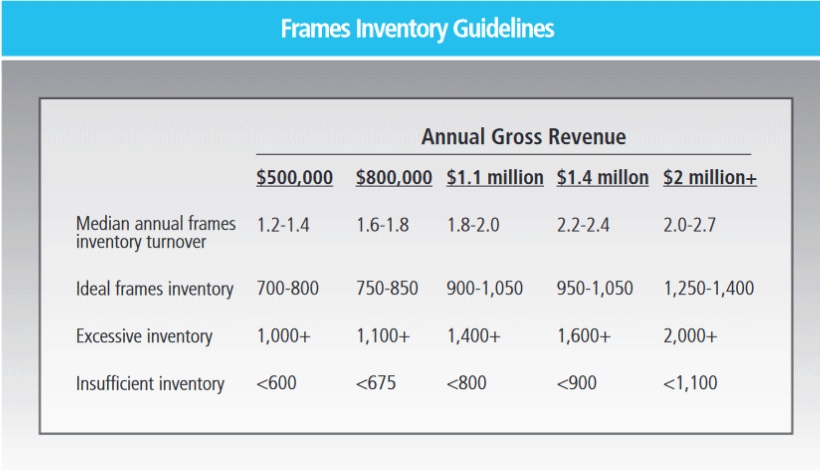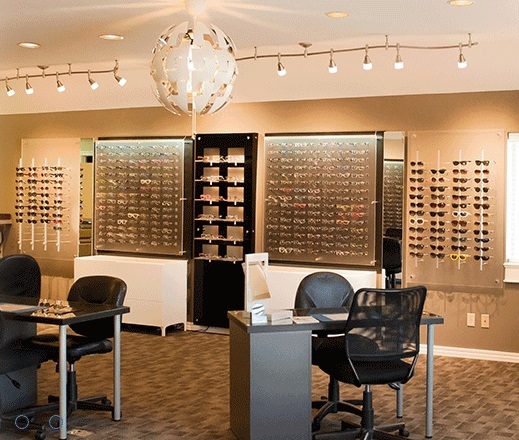By Chad Fleming, OD, FAAO

June 21, 2017
As a practice owner, who worked as an optician while putting myself through optometry school, I’ve discovered that a frame board with less merchandise produces more sales. In our practice, we couple a less-is-more strategy with a consignment model that avoids tying up practice money in unsold merchandise.
Research supports the less-is-more retail concept. Two classics on this are “Why We Buy” by Paco Underhill and “The Power of Less: The Fine Art of Limiting Yourself to the Essential…in Business and In Life” by Leo Babauta. They show that too much selection can paralyze people from making a decision.
Too much optical inventory means more time picking out eyewear and more staff needed to work with patients. The risk is that overwhelmed consumers end up needing to “think about it,” and they shop around outside your office, less likely to buy from you. Don’t give patients a reason to shop around by having so much to choose from that they can’t make a decision.
Plus, the less product that is on the board, the quicker opticians can be familiar with what they are selling, which enables them to present and explain the merchandise faster to patients. When the optician knows their inventory, they can more easily match various sizes, shapes and color preferences to a patient. When an optical has thousands of frames, it is hard to remember all of the product options.

The chart above, from ECP University’s Management & Business Academy Key Metrics, shows ideal frame inventory levels according to practice revenue level. Dr. Fleming says his practice has found that keeping less inventory in stock is the most profitable approach.
In our optical, we display 25-30 different brands of frames. We have two offices, and our frames vary in each location to give an overall selection that allows for a high percentage of individuals to purchase glasses without wanting to go someplace else due to lack of selection.
Limit Money Tied Up in Frame Inventory
We do not tie up any money in frame inventory because we buy all of our frames on consignment. We found a large inventory buying group that offered to buy and manage all of the products on our board.
This arrangement gives us less options to make our own choice of what lines we carry, but more options to utilize that capital for other areas of the office. It also allows us to exchange frame lines at no additional cost.
If you can find multiple offices to work together to create buying power, and if you as the owner can let go of having to pick out every frame and frame line, the profits will increase and your cost of goods will go down because buying 25 frames gets you a max 20 percent discount, even in buying groups, whereas, buying 500 frames gets you 60 percent discount. This will counter the decreasing margins that managed vision plans have created.
We offer approximately 750 frames at each location. We have 800-900 square feet of optical area at each location, and we do 320 exams per week total (150 location A, 270 location B).
Our revenue per exam averages $300 per patient, and our capture rate is approximately 80 percent. Our average discount of all frames purchased prior to the frame inventory buying group taking control was 20 percent, and now it is 30-35 percent based on our actual costs compared to the manufacturer-listed price.

The optical in Dr. Fleming’s practice. Dr. Fleming says buying frames on consignment from a buyer’s group allows you to avoid having money tied up in frame inventory while creating a streamlined shopping experience for patients. He says patients are more likely to buy when they are not overwhelmed by too many choices.
Free Up Staff Time & Create Greater Efficiency
Outsourced management of our frame inventory means I use no staff hours in working with the sales reps to figure out what lines we are going to carry. This allows me to put staff on the floor working with patients instead of working with sales reps, the former being profit-adding; the latter profit reducing. The company that manages our frame board has an employee of its own who manages our frame board, and we only pay for the frames as we sell them.
The buying group rotates all frames in its entire stock of frames between 15 independent practice’s offices. Frames are checked in and out of inventory as they go in and out of our two offices.
Avoid Special Ordering
The biggest mistake that many opticians make is they offer patients the option of ordering frames in different colors, sizes and other variations. This is great if you are an optical boutique that is all cash-pay. But when you are an optical with a high percentage of patients paying with managed vision plans, that doesn’t work.
If a staff member wants to special-order frames, they have to have it approved by our optical manager, who seldom approves such orders. The reason is that with 1,500 frames between our two locations, if an optician cannot find one that works for the patient, then there is an optician problem, not a frame-choice problem. There are exceptions, but for most practices, special-ordering frames will not generate enough revenue to cover the added cost of shipping, handling and employee hours required.
Set Limit for Time on Frame Board
If a frame is on the board longer than six months, that is way too long. In the current model, with our outsourced inventory management, we have the option of changing 50 percent of our frame board every other week. We don’t do this, but six months is the maximum. We try to turn our frame board 3-4 times per year, and if we do that, the number of days a frame would max out on the board would be about 100 days.
 Chad Fleming, OD, FAAO, is a partner with Wichita Optometry, P. A. in Wichita, Kan. To contact: chad@optometryceo.com
Chad Fleming, OD, FAAO, is a partner with Wichita Optometry, P. A. in Wichita, Kan. To contact: chad@optometryceo.com





















